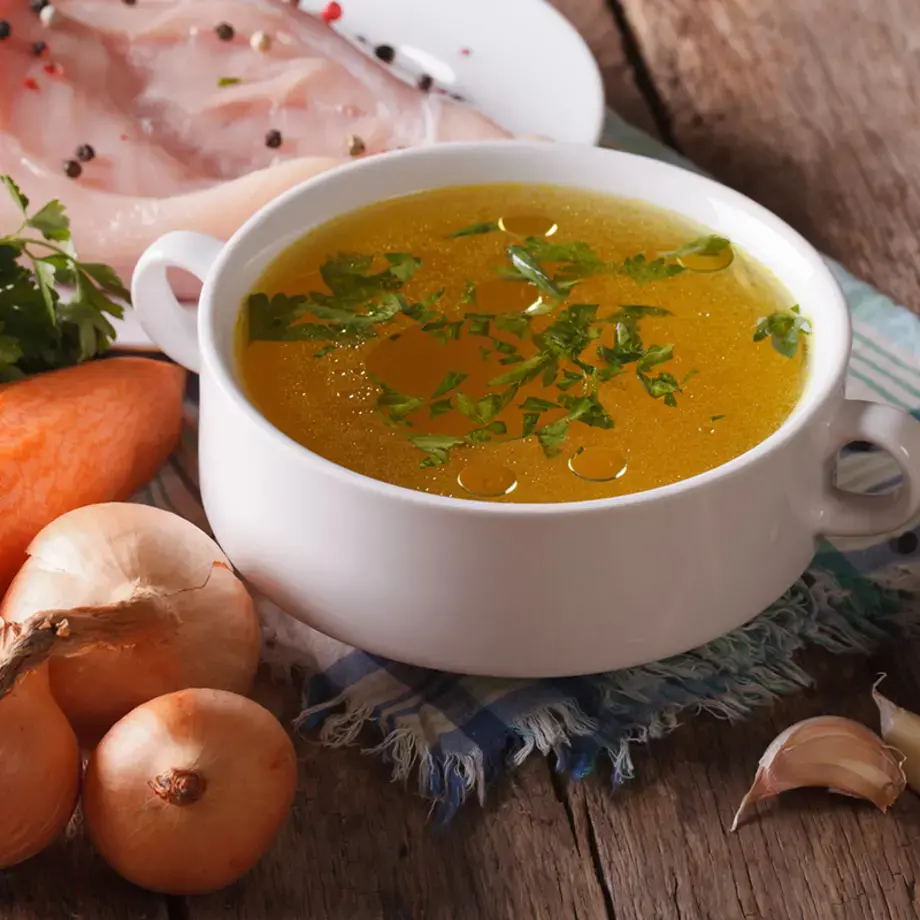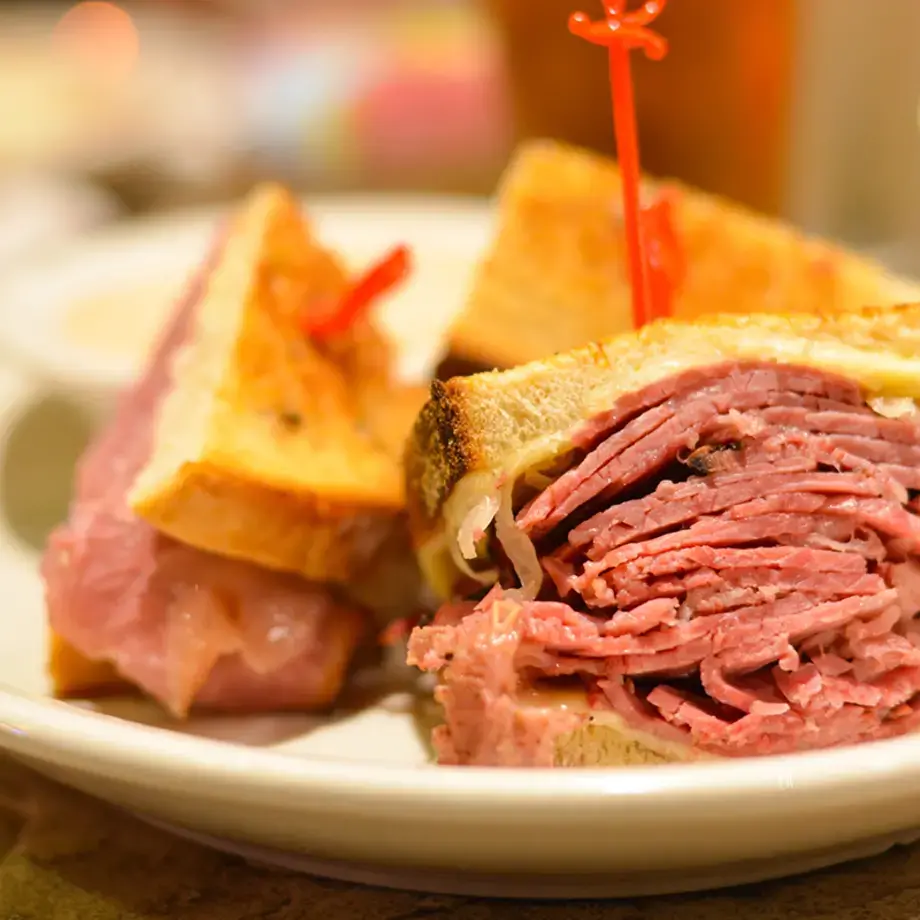Foragers go in hunt of these brilliant yellow mushrooms like prospectors searching for gold. Find out everything you need to know about the elusive chanterelle mushroom.
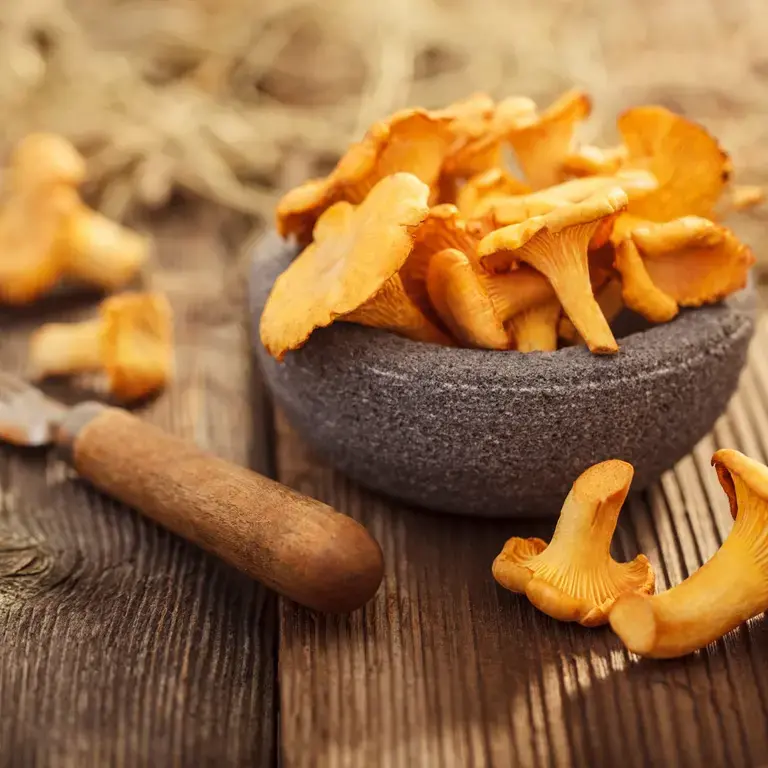
Photo: iStock
Chanterelle Mushrooms: Everything You Need to Know
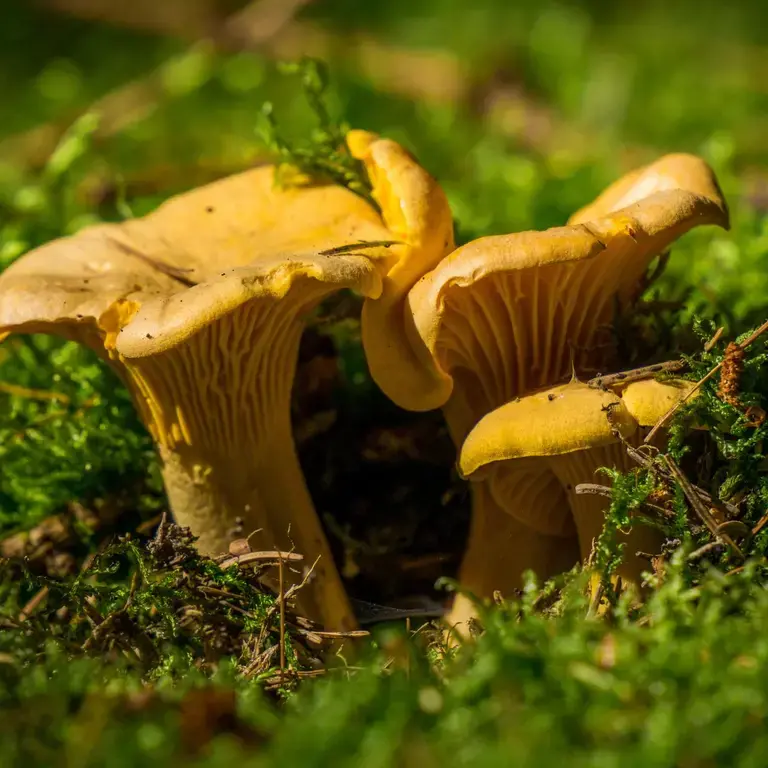
Chanterelles are a species of wild mushroom, much sought-after for their rich, complex flavour, a delicate balance of pepper, butter and earthiness with a hint of fruity apricot. There are several varieties, most of which are an attractive orange-yellow colour, although there are also red, white and black varieties. They are typically trumpet-shaped, and have a sweet, apricot fragrance with a meaty texture.
These tasty fungi can be quite difficult to get hold of, due to their unique growing conditions. Chanterelles form a symbiotic relationship with certain trees and shrubs, where the mushroom protects the roots, and both draw nutrients from each other. Because these conditions are difficult and expensive to replicate, chanterelles are not cultivated, and must be foraged. This means that they are only available during their natural growing season, in the late summer and fall.
Varieties
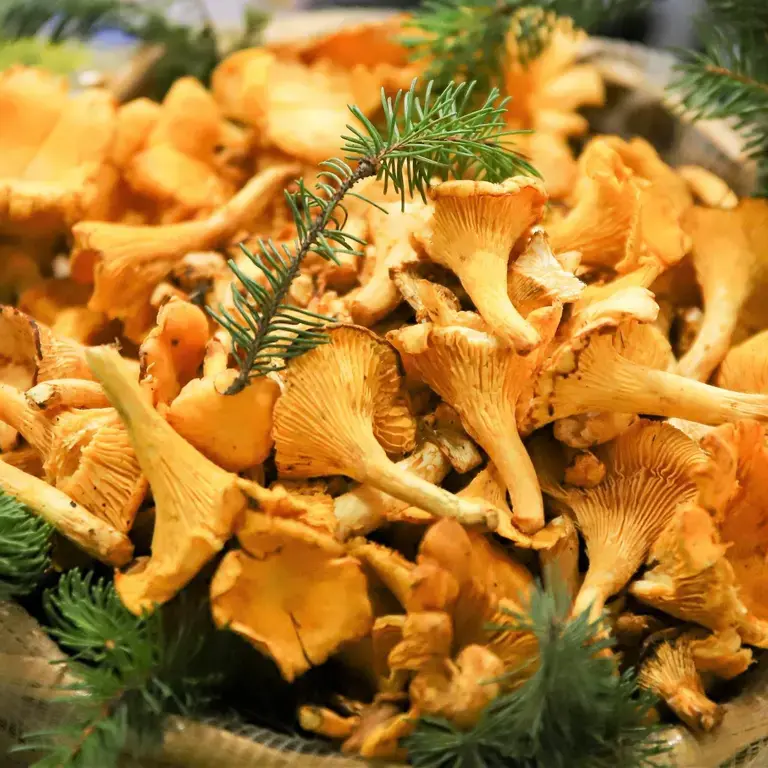
There are actually several varieties of chanterelle. Here are just a few.
Golden Chanterelle (Cantharellus cibarius)
The golden chanterelle has an orange-yellow colour and a sweet, apricot-like scent. This variety is what most people think of as a chanterelle mushroom.
Cinnabar-Red Chanterelle (Cantharellus cinnabarinus)
This variety is smaller than the better-known golden chanterelle, and ranges from bright pink to deep reddish-orange in colour.
Smooth Chanterelle (Cantharellus lateritius)
The smooth chanterelle has a similar yellow-orange colour and apricot-like scent to the golden chanterelle, but with a much smoother spore surface.
Small Chanterelle (Cantharellus minor)
Again, with a similar colour to the golden chanterelle, this variety is far smaller, with a proportionally long stem.
White Chanterelle (Cantharellus subalbidus)
The white chanterelle is larger than most other varieties, and white or off-white in colour. It can mainly be found in old-growth forests.
Ashen Chanterelle (Craterellus cinereus)
The ashen chanterelle grows in the coniferous forests of Northern Europe and has a dark grey or black colour.
Horn of Plenty (Craterellus cornucopioides)
Another black-coloured mushroom, this variety develops a white bloom as its spores mature. Both the ashen chanterelle and the horn of plenty are sometimes referred to as the ‘black trumpet’.
Flame Chanterelle (Craterellus ignicolor)
Similar in appearance to the small chanterelle, and almost as small, this variety develops a pinkish bloom on its sides and a hole in its top as it matures.
Funnel Chanterelle (Craterellus tubaeformis)
Also known as the winter mushroom, this variety has a stem with a yellow base, a brown cap and grey sides. It may actually be several different species.
Fragrant Chanterelle (Craterellus odoratus)
Oddly, this variety is no more fragrant than any of the others. It has a vivid, orange-yellow colour, and a deep, empty-vase shape.
Differences with other mushrooms
There are over 10,000 different types of mushrooms, with many different shapes and flavours. The main difference between chanterelles and other mushrooms is their sweet, apricot-like scent, and rich, complex flavour. They tend to have a slightly funnelled, open-vase shape, as opposed to the typical ‘mushroom shape’ of white mushrooms, button mushrooms or baby bella.
Chanterelles tend to have a stronger flavour than cultivated mushrooms, but with more complexity than a bold, beefy porcini. They also have a meaty texture, similar to an oyster mushroom, but the two are noticeably different in appearance, with the oyster mushroom having gills, and the chanterelle having folds.
Nutrition and benefits
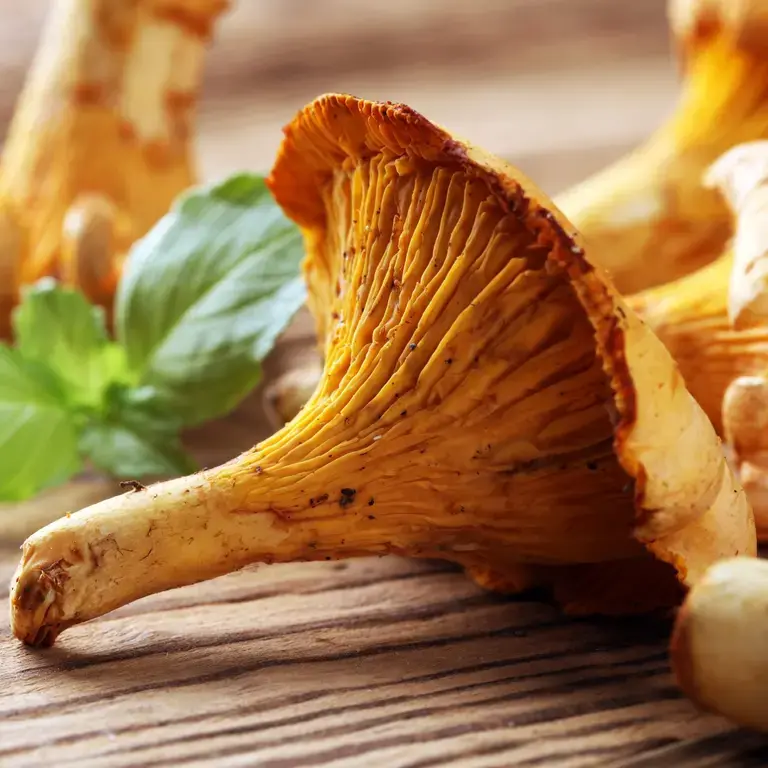
Chanterelles contain just 17 calories per cup, and provide a good source of vitamins and minerals, including vitamins D, A, E and C, several B vitamins, potassium, selenium, manganese, copper, iron and phosphorus. They are higher in vitamin D than commercially-grown mushrooms, and can contain between 60 to 100 percent of your daily recommended intake per cup. Vitamin D is an important anti-inflammatory, and helps to maintain bone health. It is particularly important for people over 50, who need more vitamin D than younger people, as well as vegetarians and vegans, who have limited sources.
Chanterelles also contain high amounts of beneficial substances called polysaccharides, like chitin and chitosan. These can help your body in several ways, including protecting your cells from damage, reducing inflammation and stimulating your immune system to produce more cells.
How to clean and store chanterelle mushrooms

Cleaning mushrooms can be a contentious issue, with some people claiming that water will make them soggy, while others say it makes little difference - mushrooms are mainly water anyway. If you buy them from the store or a market, you can simply wipe away excess dirt with a damp cloth or a toothbrush, but foraged mushrooms will be covered in soil, so there’s really no other option but to run them under the tap.
Chanterelles will keep for longer than most mushrooms, and can be kept in the refrigerator in a paper bag for up to ten days. If you want to store them for even longer, they can be pickled, canned, dehydrated, or sautéed until they release their moisture, then frozen.
Recipes

If you’re lucky enough to have some chanterelles in your fridge at home, here are some of the delicious recipes you can make with them
Chanterelle bruschetta with sumac mayonnaise: a simple, elegant appetiser that makes the complex flavour of the chanterelles the star.
Chanterelle mushroom chowder with crab and corn: this beautifully savoury summer chowder from Health Starts in the Kitchen is seasonal cooking at its best.
Chanterelle mushrooms with tagliatelle: this simple midweek pasta from Jo Cooks is full of Italian flavour and on the table in just 30 minutes.
Roast chicken with chanterelles and peas: earthy chanterelles, white wine and cream make the perfect sauce for a golden roast chicken in this occasion-worthy dish from Fine Cooking.



